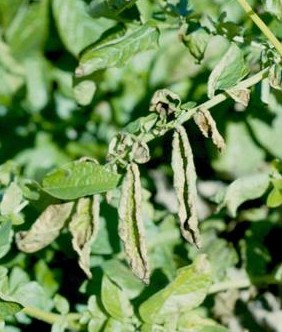 Problems with pests and diseases are constant problems in the garden. You can’t entirely eliminate them but you can do something to minimize them. Good garden practices go a long way to keeping the plants healthy and the garden looking beautiful. Reducing problems starts with choosing the best plants for your situation and involves buying, planting, and maintaining healthy plants while being ever watchful for the first signs of problems.
Problems with pests and diseases are constant problems in the garden. You can’t entirely eliminate them but you can do something to minimize them. Good garden practices go a long way to keeping the plants healthy and the garden looking beautiful. Reducing problems starts with choosing the best plants for your situation and involves buying, planting, and maintaining healthy plants while being ever watchful for the first signs of problems.
1. Plant Selection
-Pick plants that are appropriate for your climate and soil conditions. Some plants won’t tolerate heat and humidity, others don’t tolerate cold weather so look around and see what grows well in your area.
-Pick resistant varieties and cultivars if possible. Plant breeders have produced many cultivars that resist disease so seek out those that are resistant to local pests and diseases.
2. Buy healthy plants and bulbs
If you start out with a healthy plant or bulb it is much more likely to resist infection. Sometimes pests and diseases are brought to you garden on plants from a nursery so avoid plants that have wilted parts, small root systems, yellow leaves, weak growth, or leaf damage.
4. Site Selection
Locate plants in areas that meet their light and moisture requirements. Plants that have inadequate light or too much soil moisture are more likely to develop disease problems than plants that are don’t. Conversely, plants that need shade or dry soil will weaken if grown in too much sun light or wet soil.
3. Water
Water when needed avoiding overhead watering if possible; alternatively, water in the morning so leaves have a chance to dry before night time. Mulch to conserve soil moisture. Insure that the soil is draining well as water-logged soil may lead to root rot.
4. Nutrition
Fertilize plants as needed. Some plants need regular applications of fertilizer but others do poorly if over fertilized. Check the nutrient requirements of your plants and fertilize accordingly.
5. Weed Control
Weed use water and nutrients that garden plants may need. In addition they may shade out more desirable plants and attract their own insects and disease problem.
6. Monitoring
Watch for signs of disease or pest damage all through the growing season and remove infected parts. Early detection and prompt action can save plants that otherwise would die after spreading the disease.
7. Pruning
Suckers and damaged or diseased plant parts should be removed immediately. In the fall and/or spring woody plants can be thinned to improve circulation thereby reducing the chance of fungal infection.
8. Debris Removal
In the fall all litter under and around plants should be removed. It may contain fungal spores, insect eggs and/or immature insects.
9. Crop Rotation
Each year when you plant your garden consider changing the location of your plants. Although some plants can live in the same soil for years others can not because of the build up of disease and pest organisms. Nematodes and root rot pathogens are particularly persistent in the soil. Crop rotation also makes better use of soil nutrients since plants differ in their nutrient requirements.